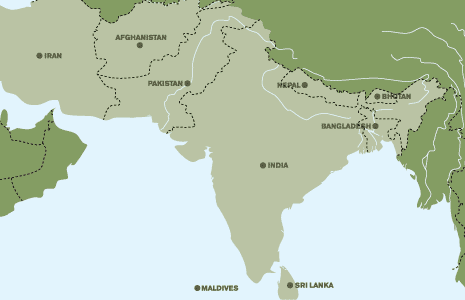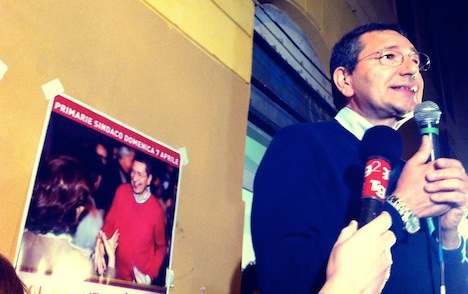No one thinks about ‘southwest Asia’ as among the world’s regions. But should we?
Consider for a moment that within the next 12 months, the world will witness the following:![]()
![]()
![]()
![]()
![]()
- the rollout of a new, more stable government headed by Nawaz Sharif in Pakistan dominated with the twin problems of regional security and economic growth, itself a transfer of power following the first civilian government to serve out a full term in office since Pakistan’s founding in 1947;
- the selection of a new president for Pakistan in August 2013 to succeed Asif Ali Zardari, the widower of former prime minister Benazir Bhutto;
- the selection of a new chief justice of the Supreme Court of Pakistan to succeed Iftikhar Muhammad Chaudhry, who’s raised the profile of the Pakistani judiciary so far that it unilaterally forced a former prime minister from office;
- the selection of a new army chief of staff in Pakistan in November 2014 to succeed Ashfaq Kayani, who’s led Pakistan’s military since 2007 (when former general Pervez Musharraf was still in charge of Pakistan’s government) and who remains arguably the most powerful figure in Pakistan;
- the election of a new president in Iran in June who, despite a field of mostly conservatives who will likely respect the institutional dominance of Supreme Leader Ali Khamenei, will have a major role in determining Iran’s regional policy in the years ahead and who will set a marked contrast to the eight previous years of Mahmoud Ahmadinejad’s administration;
- the drawdown of U.S. combat forces in Afghanistan for the first time since 2001 later this year;
- the election of a new president in Afghanistan in April 2014 to succeed Hamid Karzai, who cannot (and doesn’t want to) run for reelection;
- the election of a new government in Bangladesh before the end of January 2014 under the explosive backdrop of the ongoing 1971 war crimes tribunals and the Shahbagh protests of earlier this year; and
- the election of a new government in India before the end of May 2014 — likely to be headed by the latest member of the incumbent party’s family dynasty, Rahul Gandhi, or the sprightly chief minister of Gujarat, Narendra Modi — that will end of a decade of rule by prime minister Manmohan Singh.
Taken together, it’s a moment of extreme political change in South Asia, with turnover in each of the five pivotal countries (with a cumulative population of over 1.65 billion people) that touches and concerns the ‘Af-Pak’ region, and the greater South Asian region generally, which could well be the world’s most sensitive security theater and remains a critical region for global economic development — India is one of the four BRIC countries, and Bangladesh, Iran and Pakistan are each ‘Next Eleven’ countries.
That’s without mentioning the fact that we’ve just entered the first year of what’s expected to be a decade of leadership by Xi Jinping and the ‘Fifth Generation’ of Chinese Communist Party leadership in the People’s Republic of China, and the ongoing interest of Russia as a geopolitical player in the region, with so many former Central Asian Soviet republics bordering the region. It’s also without mentioning the thaw in political repression and diplomatic isolation currently underway in Burma/Myanmar.
For some time, discussion about the European Union has involved the caveat that major policy initiatives on EU policy, especially with respect to monetary union and fiscal union, are on hold until the German federal election, which will take place at the end of September 2013. It’s reasonable to assume that Angela Merkel will want to secure reelection as Germany’s chancellor before pushing forward with new changes.
But that pales in comparison to the political transformation that will take place in west Asia in the next 12 months, even though I see very few commentators discussing that when they talk about Iran, south Asia, Af-Pak, etc. In many ways, I think that’s because foreign policy analysis don’t typically think about this particular set of countries as a discrete region in its own right.
Iran comes up in the context of the Middle East and much more rarely in the context of Afghan or Pakistani security, even though Iran’s population is comprised of Persians and Azeris, not the Arabs who otherwise dominate the Middle East.
It’s more common to think about Pakistan today in the context of Afghanistan (for obvious U.S. security interest reasons) than in the context of Bangladesh, even though Bangladesh continues to battle over political ghosts that originated in its 1971 war of independence from Pakistan. But how much of that has to do with, say, early turf wars in the Obama administration between the late diplomat Richard Holbrooke and other envoys, or the Bush administration’s initial approach to the global war on terror?
It’s common to think about Pakistan, India and Bangladesh together (but not Iran) because they were so centrally administered together as part of the British empire from the 18th through the 20th century.
Looking forward through the end of the 2010s and the 2020s, do any of those linkages make as much sense?
Without channeling the spirit of Edward Said too much, what do we even call the region spanning from Tehran to Dhaka and from Mumbai to Kabul? West Asia? Southwest Asia?
Though I cringe to call it a Spring, make no mistake — the leadership realignment has the potential to remake world politics in ways that transcend even the Arab Spring revolts of 2010 and 2011.

